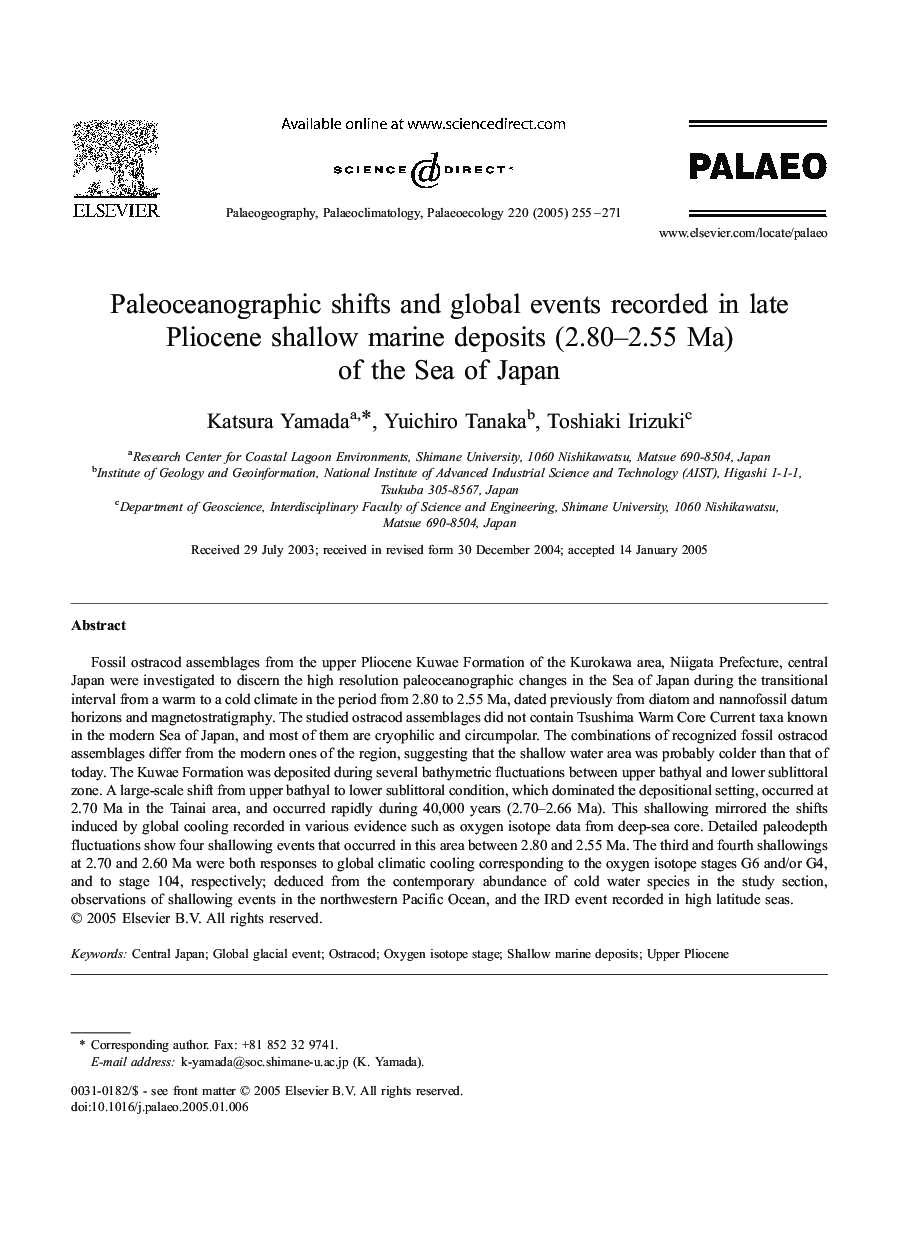| Article ID | Journal | Published Year | Pages | File Type |
|---|---|---|---|---|
| 9463177 | Palaeogeography, Palaeoclimatology, Palaeoecology | 2005 | 17 Pages |
Abstract
Fossil ostracod assemblages from the upper Pliocene Kuwae Formation of the Kurokawa area, Niigata Prefecture, central Japan were investigated to discern the high resolution paleoceanographic changes in the Sea of Japan during the transitional interval from a warm to a cold climate in the period from 2.80 to 2.55 Ma, dated previously from diatom and nannofossil datum horizons and magnetostratigraphy. The studied ostracod assemblages did not contain Tsushima Warm Core Current taxa known in the modern Sea of Japan, and most of them are cryophilic and circumpolar. The combinations of recognized fossil ostracod assemblages differ from the modern ones of the region, suggesting that the shallow water area was probably colder than that of today. The Kuwae Formation was deposited during several bathymetric fluctuations between upper bathyal and lower sublittoral zone. A large-scale shift from upper bathyal to lower sublittoral condition, which dominated the depositional setting, occurred at 2.70 Ma in the Tainai area, and occurred rapidly during 40,000 years (2.70-2.66 Ma). This shallowing mirrored the shifts induced by global cooling recorded in various evidence such as oxygen isotope data from deep-sea core. Detailed paleodepth fluctuations show four shallowing events that occurred in this area between 2.80 and 2.55 Ma. The third and fourth shallowings at 2.70 and 2.60 Ma were both responses to global climatic cooling corresponding to the oxygen isotope stages G6 and/or G4, and to stage 104, respectively; deduced from the contemporary abundance of cold water species in the study section, observations of shallowing events in the northwestern Pacific Ocean, and the IRD event recorded in high latitude seas.
Keywords
Related Topics
Physical Sciences and Engineering
Earth and Planetary Sciences
Earth-Surface Processes
Authors
Katsura Yamada, Yuichiro Tanaka, Toshiaki Irizuki,
